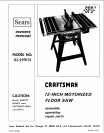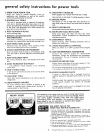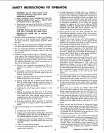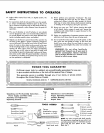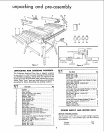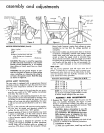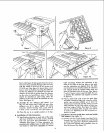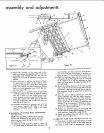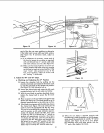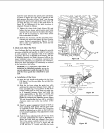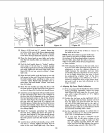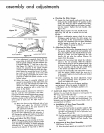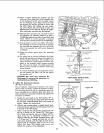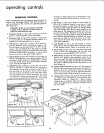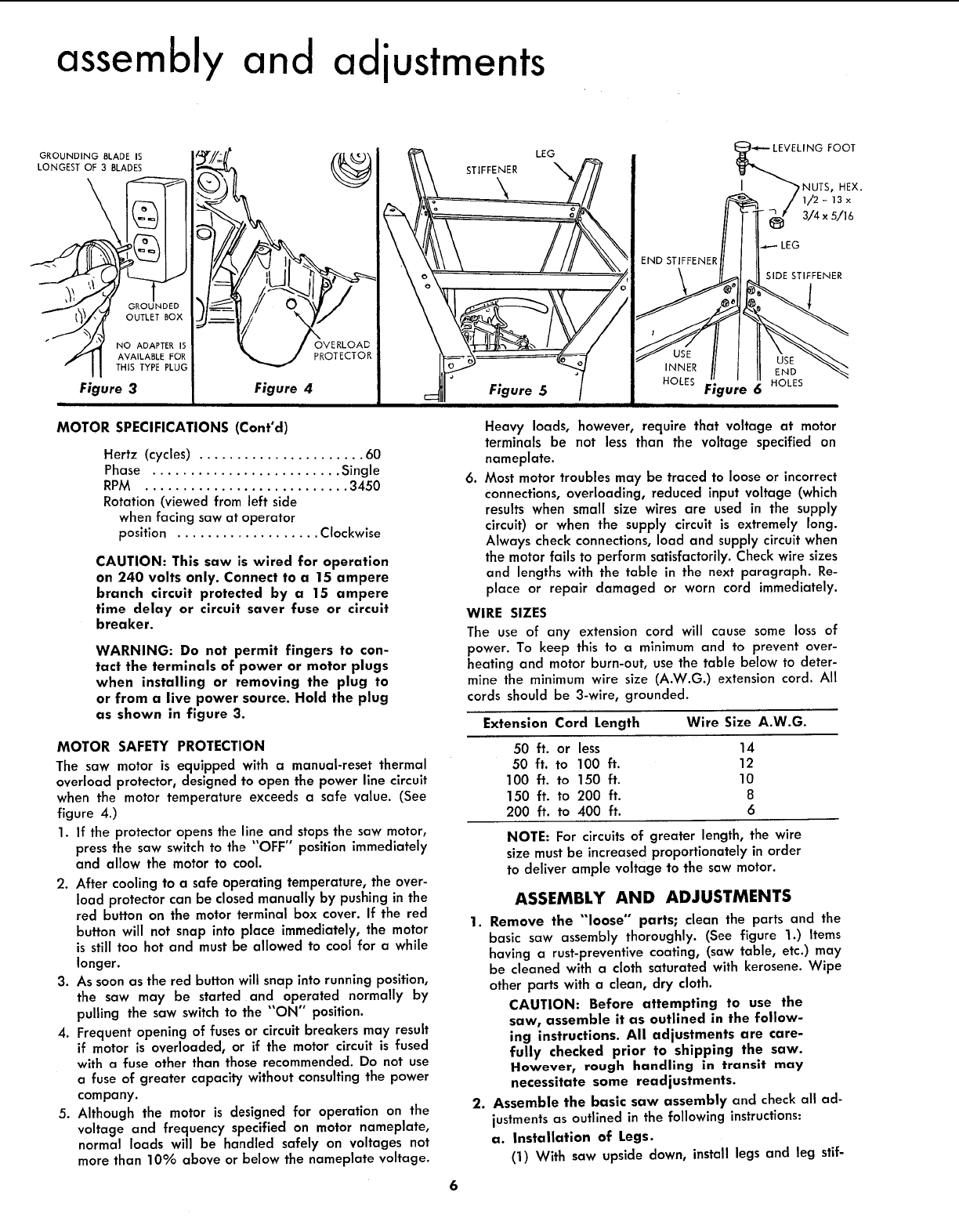
assembly and adjustments
GROUNDINGBLADE_S I!'y/Z-//' f_ _ I 'EG
" ./'_I / NO ADAPTER IS I _ ! OVERLOAD I
Jfl I AVAILABLEFORI _ J PROTECTORI
" II TH'sTYPE LU°I I
Figure 3 J Figure 4 | Figure 5
I
END STIFFENER
INNER
HOLES
Figure
LING FOOT
NUTS, HEX.
/ iI -13x
// I''_ _ 3/4x5/16
I SIDE STIFFENER
6 HOLES
MOTOR SPECIFICATIONS (Cont°d)
Hertz (cycles) ...................... 60
Phase ......................... Single
RPM ........................... 3450
Rotation (viewed from left side
when facing saw at operator
position ................... Clockwise
CAUTION: This saw is wired for operation
on 240 volts only. Connect to a 15 ampere
branch circuit protected by a 15 ampere
time delay or circuit saver fuse or circuit
breaker.
WARNING: Do not permit fingers to con-
tact the terminals of power or motor plugs
when installing or removing the plug to
or from a live power source. Hold the plug
as shown in figure 3.
MOTOR SAFETY PROTECTION
The saw motor is equipped with a manual-reset thermal
overload protector, designed to open the power line circuit
when the motor temperature exceeds a safe value. (See
figure 4.)
1. If the protector opens the line and stopsthe saw motor,
press the saw switch to the "OFF" position immediately
and allow the motor to cool.
2. After cooling to a safe operating temperature, the over-
load protector can be closed manually by pushing in the
red button on the motor terminal box cover. If the red
button will not snap into place immediately, the motor
is still too hot and must be allowed to cool for a while
longer.
3. As soon as the red button will snap into running position,
the saw may be started and operated normally by
pulling the saw switch to the "'ON" position.
4. Frequent opening of fusesor circuit breakers may result
if motor is overloaded, or if the motor circuit is fused
with a fuse other than those recommended. Do not use
a fuse of greater capacity without consulting the power
company.
5. Although the motor is designed for operation on the
voltage and frequency specified on motor nameplate,
normal loads will be handled safely on voltages not
more than 10% above or below the nameplate voltage.
.
Heavy loads, however, require that voltage at motor
terminals be not less than the voltage specified on
nameplate.
Most motor troubles may be traced to loose or incorrect
connections, overloading, reduced input voltage (which
results when small size wires are used in the supply
circuit) or when the supply circuit is extremely long.
Always check connections, load and supply circuit when
the motor fails to perform satisfactorily. Check wire sizes
and lengths with the table in the next paragraph. Re-
place or repair damaged or worn cord immediately.
WIRE SIZES
The use of any extension cord will cause some loss of
power. To keep this to a minimum and to prevent over-
heating and motor burn-out, use the table below to deter-
mine the minimum wire size (A.W.G.) extension cord. All
cords should be 3-wire, grounded.
Extension Cord Length Wire Size A.W.G.
50 ft. or less 14
50 ft. to 100 ft. 12
100 ft. to 150 ft. 10
150 ft. to 200 ft. 8
200 ft. to 400 ft. 6
NOTE: For circuits of greater length, the wire
size must be increased proportionately in order
to deliver ample voltage to the saw motor.
ASSEMBLY AND ADJUSTMENTS
1. Remove the "'loose" parts; clean the parts and the
basic saw assembly thoroughly. (See figure 1.) Items
having a rust-preventive coating, (saw table, etc.) may
be cleaned with a cloth saturated with kerosene. Wipe
other parts with a clean, dry cloth.
CAUTION: Before attempting to use the
saw, assemble it as outlined in the follow-
ing instructions. All adjustments are care-
fully checked prior to shipping the saw.
However_ rough handling in transit may
necessitate some readjustments.
2. Assemble the basic saw assembly and check all ad-
justmentsas outlined in the following instructions:
a. Installation of Legs.
(1) With saw upside down, install legs and leg stif-
6



